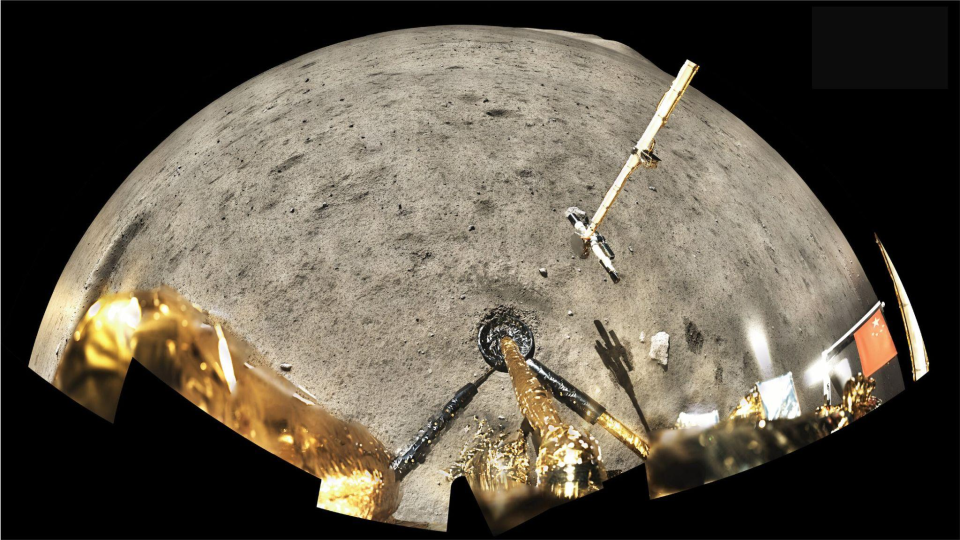
On Dec 1, 2020, China landed the Chang’e 5 mission on the near side of the moon. Three days later, that little lander lifted back off with about 1.7 kg lunar rocks and soil. On Dec 16 this mission would successfully return to Earth and analysis would begin.
In this sample, researchers found tiny glass beads produced in Lunar Volcanoes. Analysis of their chemical composition indicates these beads were formed as recently as 120 million years ago. It is unclear just how common this volcanism was… but it’s still an amazing new discovery.
In a paper published in Science with first other Bi-wen Wang, researchers discuss their analysis of roughly 3000 glass beads – pinhead sized objects – that formed from molten rock. While the vast majority were the result of rocks being melted during impacts, 3 beads had chemical compositions unique to volcanic eruptions. Radiocarbon dating using uranium to lead indicates they formed 123 ± 15 million years ago.
This means, in theory, had the eruption been in just the right place at just the right time, and had dinosaurs had telescopes, they might have been able to see the glow of an eruption on the shadowed side of the Moon.
Volcanoes are caused by lots of different things, and chemically, it looks like this eruption contained magma created through the decay of radioactive elements in the mantle of the moon. This means the moon didn’t need to still have a liquid core; it just needed a blob of something capable of generating a whole lot of heat while decaying.
This is your reminder, our world and others stay warm longer internally in part due to radioactive decay… and planets can have random thermonuclear fission. In fact, about 2 billion years ago under what is present day Gabon there was a pocket of our planet that temporarily became a nuclear reactor. Somehow, the local Uranium 235 hit a critical mass and did its thing. The reaction was moderated by ground water and able to sustain itself for a few hundred thousand years.
Nature is weird, y’all.
